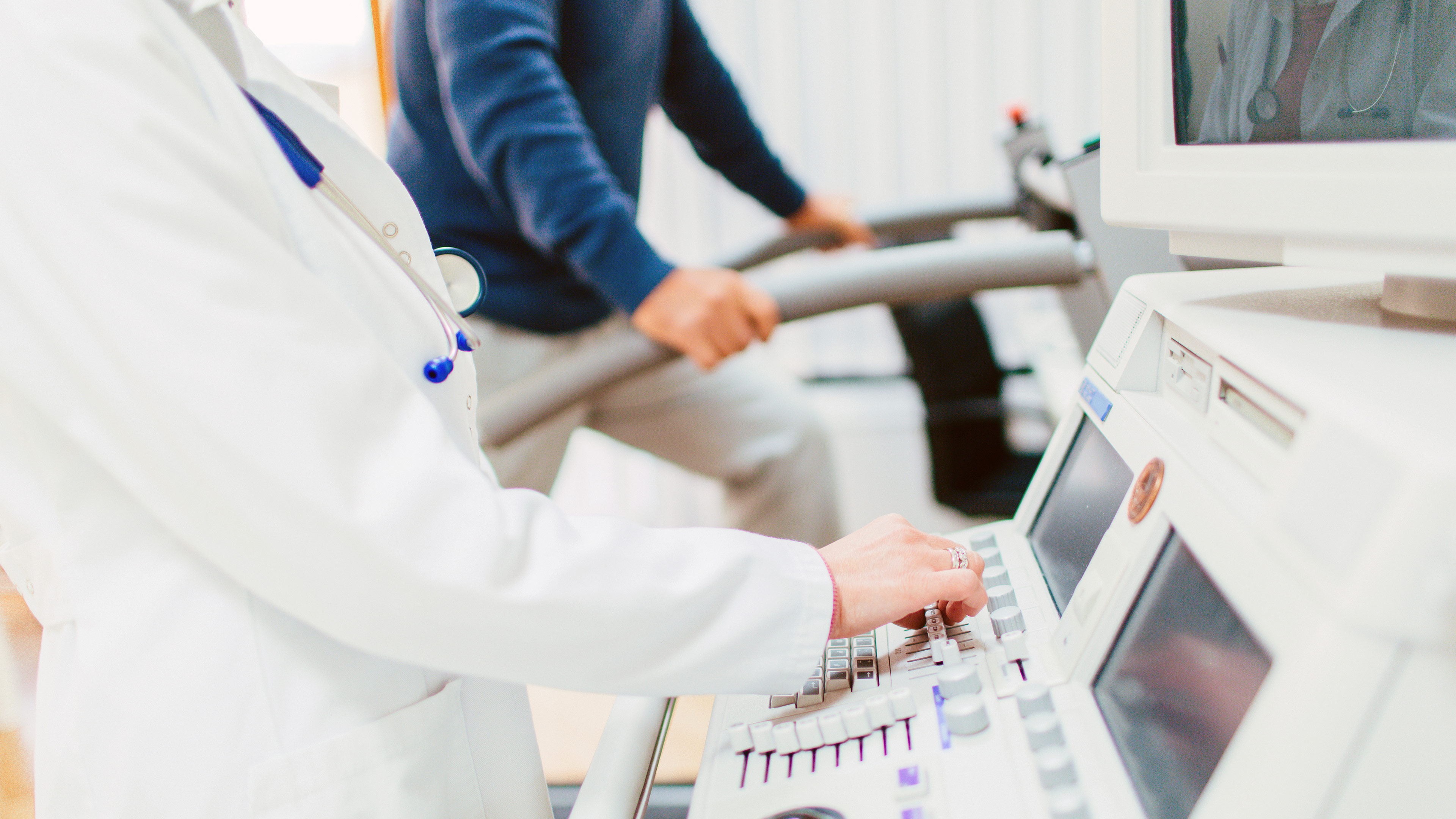Heart and Circulatory System
Bruce Protocol Stress Test

The Bruce protocol is a standard test in cardiology and is comprised of multiple exercise stages of three minutes each. At each stage, the gradient and speed of the treadmill are elevated to increase work output, called METS. Stage 1 of the Bruce protocol is performed at 1.7 miles per hour and a 10% gradient. Stage 2 is 2.5 mph and 12%, while Stage 3 goes to 3.4 mph and 14%.
The FAA expects testing to achieve 100% of Maximum Predicted Heart Rate (220 minus your age) and nine minutes duration unless medically contraindicated or prevented by symptoms such as fatigue, leg cramps, shortness of breath, or chest discomfort. The FAA does accept a minimum of 85% of maximum predicted rate, but stay on the treadmill as long as possible, up to nine minutes to demonstrate maximum effort. "The FAA allows for applicants over age 70 to exercise for at least six minutes, but must still attain 85% of predicted maximum heart rate."
If beta-blockers, calcium channel blockers, or digitalis-type medications are being taken to inhibit heart rate response, it may be necessary to discontinue the drugs for 48 hours before testing in order to attain adequate heart rate. Consult with your physician before discontinuing medication.
In situations where a treadmill exercise test cannot be done, drugs may be used in place of the treadmill test to increase heart rate. The FAA will consider this type of testing, but your cardiologist must include a detailed explanation as to the reasons for chemical testing.
All ECG tracings, including a rhythm strip and blood pressure/pulse recording, must be submitted along with the worksheet and physician's interpretation. The 12-lead ECG should be recorded at rest, supine and standing; one or more times during each stage of exercise; at the end of each stage; at peak exercise; and every minute during recovery for at least five minutes, or until the tracing returns to baseline.
Updated March 2020